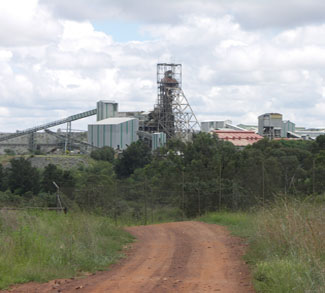
The United States’ economy, industry, and security remain vulnerable to a copper squeeze expected in the near future. Regarding the amount of the “red metal” needed not just to match “green transition” goals, but also societal trends such as growing urbanization, US policy makers are now tasked with responding to an almost certain shortfall. Moreover, ongoing geopolitical turmoil and recent trade wars highlight the need to mitigate this shortfall’s repercussions on the US economy in terms of domestic consumption, financial volatility, and leverage for geopolitical blackmail.
The US is the fifth-largest copper producer in the world, and is home to major copper producers and mines, but it must now seek to develop its downstream process on the road toward energy independence, keeping in mind that China’s capabilities are unmatched in the sphere of refining strategic minerals.
It should not come as a surprise when experts warn that the copper squeeze could be “bigger than oil.” Copper is essential to modern societies; it is present in turbines, electrical transmission lines, and motors. It has the highest conductivity of non-precious metals, allowing it to more efficiently transmit electrical energy from the generation source to the point of use with less energy lost along the way. And with the global drive towards electrification, there is an argument to be made that copper wire connects the present to the future.
In addition to EVs, social developments, and particularly the trend towards urbanization, is another catalyst for growing copper consumption. By 2030, around 60% of global population will live in cities. Electrical grids will continuously expand to feed the power needed for these societies, ensuring the bright future for the metal. And as annual copper demand is set to increase by 53% by 2040, BloombergNEF predicts a shortfall of 14M tons by then.
Despite its importance in the push towards electrifying and decarbonizing global economies, copper, unlike lithium for instance, is not classified by the USGS as a “critical mineral.” Indeed, like in 2018, the 2022 USGS Critical Minerals list snubbed the red metal, meaning the government has not deployed a specific strategy for a metal that yet can be leveraged by foreign powers during economic sanctions and trade wars. The key justification lies in the fact that the US does not need to import copper ore and has a robust domestic supply, which is supported notably by Freeport McMoran’s mines that together produce up to 63% of the country’s copper. The US imported 34% of its copper ore in 2018, well short of the 50% needed to reach a critical threshold for the USGS. Furthermore, the US’ main sources of import represent a negligible geopolitical risk, as more than 95% of refined copper emanates from Chile (62%), Canada, and Mexico.
So why worry about the security of the US copper supply chain? The answer is simple: copper is not technology-ready when it comes out the ground, and needs processing before it can be manufactured into the copper rotor powering a Tesla Roadster.
It is during these midstream and downstream processes of turning concentrate into refined copper that the US lacks a strategic advantage. In terms of processing the metal, domestic capacity is scarce, with only three copper smelters in operation in the US, as opposed to 14 in China.
Looking ahead, several (not so early) warnings highlight the need for the US to intensify the domestication of midstream and downstream processing of copper. Following a global trend, the concentration of copper ore mined in Chile has decreased by more than 30% since 2005 according to the International Energy Agency. Mounting environmental hazard from declining ore concentrate quality, combined with the intensification of water shortages seen throughout Chile in 2022, suggest that exogenous risks could threaten the security of the US’ supply chain of imported refined copper. This inherent risk increases the prospects of (another) area of dependance on China.
According to the European Commission, 41% of all copper is refined in China; the country produced 7.12 million tons of refined copper in 2022, a 2.6% increase from 2021.
The US must then export copper concentrate toward Asia for it to return to American shores in a “technology-ready” state. Even a giant like Freeport McMoran, which ranks in the top 50 by market capitalization, is not an advanced refining company. Copper wire, used in the production of electrical wires, cables, and is highly in demand for the “green transition,” highlights this challenge. In 2020, the US imported $1.27 billion copper wire, vs $917 million exports, making it the largest importer of copper wire in the world.
In a context of mounting antagonism between Washington and Beijing, which hit a recent peak in August following US House Speaker Nancy Pelosi’s visit to Taiwan, the US ought to remember its copper supply chain is vulnerable to countries that dominate the midstream and downstream processes, like China. Beijing refines a large share of global copper, and through policies like domestic ore beneficiation, export restrictions, tariffs and quotas, has the power to disrupt the US supply chain; In 2018, a 25% tariff by China on US copper concentrate made exports to Beijing economically unviable, threatening in return the US’ ability to import processed copper and the future of KGHM International’s Robinson mine.
Washington appears to only be making limited investment in copper refining and smelting to address this challenge. This is particularly due to the high investment these facilities require compared and the relative volatility of commodities overall. Refining copper in China is more cost-competitive than domestically – or elsewhere – for the US, and it is also less likely to be politically challenged. In Arizona, projects like the Rio Tinto and BHP merger Resolution Copper or Hudbay Mineral’s Rosemont, which are deemed critical by the mining industry to meet the US’ growing copper demand, illustrate how the social and environmental factors can make or break a project. But in the context of mining, policy makers shying away from addressing domestic concerns also means turning a blind eye to foreign practices with much lower environmental, social standards, sometimes even involving alleged child labor.
One cannot count on the hope that high inflationary pressures will be reflected in high commodity prices, which could shift investor sentiment toward funding midstream and downstream copper projects in the United States. An October Labor Department report and China’s languishing economy contributed to a decrease in the copper price as the overall market sentiment for risk (and volatile) assets such as commodities is currently on a negative trend, feeding a roughly 23% decrease in the red metal’s price in 2022. But over the longer term, demand will undoubtedly outpace supply, providing a brighter outlook for copper, and ever highlighting the need for Washington to strengthen all components of the supply chain for this “metal of the future” that it is well endowed with.
Part of reinforcing the domestic supply chain will be redefining “critical minerals” that are needed not only for the “green transition,” but also for the US’ economy and security. The current geopolitical turmoil is indicative of the need to be self-sufficient and ensure mineral independence on the road toward energy security. The World Bank’s “demand risk matrix” indeed qualifies copper as a critical mineral required for the functioning of many future technologies. Ongoing discussions by the London Metal Exchange regarding a potential ban of Russian metals – Russia accounts for 4% of global copper supply – would drastically affect the metal’s price and global movements. This news, and falling copper prices amid the Ukraine war, highlight how reactive commodities are to conflicts, wars, and geopolitical unbalances.



